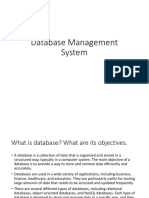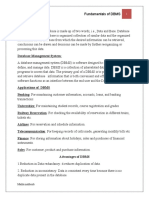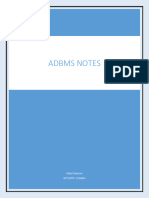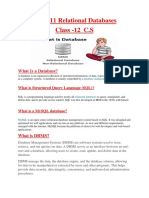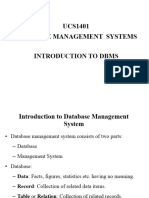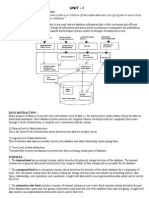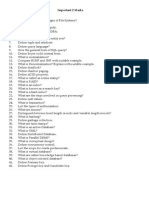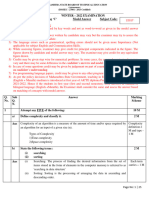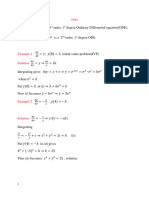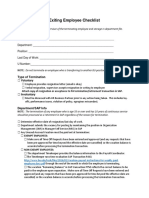0% found this document useful (0 votes)
94 views7 pagesDBMS Notes 2
The document discusses database management systems (DBMS). It defines DBMS as software that stores, retrieves, defines, and manages data in a database. It then discusses relational database management systems (RDBMS) and some common applications of DBMS like banking, telecom, online shopping, and education. The document also summarizes some key advantages of DBMS over file systems, including reduced data redundancy and improved data security and access. It briefly outlines DBMS implementation costs and complexity. The remainder of the document provides definitions and descriptions of database concepts like metadata, database architecture models, data independence, constraints, keys, data models, normalization, joins, dependencies, deadlocks, and transactions.
Uploaded by
swatiCopyright
© © All Rights Reserved
We take content rights seriously. If you suspect this is your content, claim it here.
Available Formats
Download as PDF, TXT or read online on Scribd
0% found this document useful (0 votes)
94 views7 pagesDBMS Notes 2
The document discusses database management systems (DBMS). It defines DBMS as software that stores, retrieves, defines, and manages data in a database. It then discusses relational database management systems (RDBMS) and some common applications of DBMS like banking, telecom, online shopping, and education. The document also summarizes some key advantages of DBMS over file systems, including reduced data redundancy and improved data security and access. It briefly outlines DBMS implementation costs and complexity. The remainder of the document provides definitions and descriptions of database concepts like metadata, database architecture models, data independence, constraints, keys, data models, normalization, joins, dependencies, deadlocks, and transactions.
Uploaded by
swatiCopyright
© © All Rights Reserved
We take content rights seriously. If you suspect this is your content, claim it here.
Available Formats
Download as PDF, TXT or read online on Scribd
/ 7

















